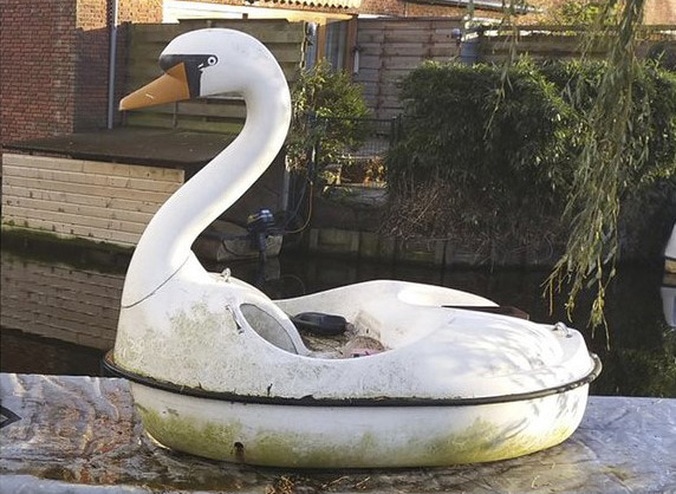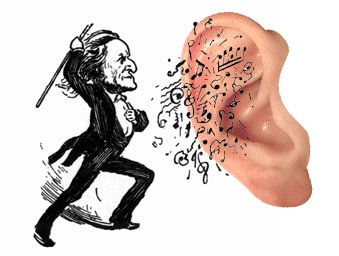A new release of Lohengrin on CD. A review from the performances on 18 & 20 December 2015. Why the operas of Richard Wagner have to last so long? Sometimes I get that question from a friend when I disappear for half a day into a concert hall or music theater in order to attend a music drama of the dear man. Those operas are so long because Wagner doesn’t like to take short-cuts. He is a man of repetitions - in his lyrics and his music. He loves recapitulation. His characters repeat what has happened in the previous act(s). They bring into play the events that occurred before the opera started and led into the current situation everyone is in (spoiler: not good most of the time). Leitmotifs that pass by many times - but each time slightly different orchestrated so you can spend your time with them without getting bored. Wagner was a fabulous storyteller, more in music than in words. An observation that is (and was) not shared by everyone. Debussy, for example, was not completely unsympathetic towards his music – the Schopenhauerian pessimism, the dystopian view on male-female relationships and the Teutonic passions that Wagner entrusted to his compositions -, he experienced beautiful moments in it. He only had to wait for them so damn long in those lengthy operas. You would almost think that the Frenchman never attended a proper performance of a Wagner opera because a good performance is like a train. It takes you automatically towards the end - and at the point of arrival you can only feel sorry because the trip has not lasted any longer. The Sorcerer of Bayreuth earned his nickname for a reason. He was a genius. Seven years before his death, his complete Ring des Nibelungen was staged for the first time when the theater of his own design was finished, built on a green hill in Bavarian Bayreuth. Wagner wasn’t satisfied with those performances. Where it came to both musical and theatrical aspects. Back then, in 1876, his ideas about total art and music of the future had not yet led to completely satisfactory performances. Now, 140 years later, we are still not done with them. In addition to staged versions, his operas also find their way to the concert hall for concert performances. In December 2015 there were two performances of Lohengrin at the Concertgebouw in which the concert version was enhanced with some small elements of staging. There was a swan (a doll around the arm of an actor) and the singers were singing their role not only using the stage but also the balcony. Despite the aforementioned length of Wagner's operas, the story of Lohengrin can be summed up in just one sentence: Lohengrin is the story of a Grail knight who answers the call for help of the young noblewoman Elsa who is accused of having killed her little brother, which is getting the dear chap into in a boat pulled forward by a swan that, in reality is Elsa’s little brother, who, believed to be dead, was shape shifted into the animal by Ortrud, an evil woman with some issues and black-magical gifts who seduces Telramund, right hand of the Duke of Brabant, and causes him to accuse Elsa so that she and Telramund, who is really a bit of a wimp, can take the place that is vacant, after the disappearance of the legal heir of the Duke of Brabant, that little brother, and the planned removal of his sister Elsa, but the whole thing is thwarted by Lohengrin who - Nie Sollst Du Mich Befragen - proves Elsa's innocence by an ordeal, he defeats Telramund in a duel, which doesn’t prevent the evil souls in this music drama to go their evil ways and, like in all of opera, have some people killed before peace can be made but without those few people, Telramund, Ortrud and Elsa, who eventually has quite too much of it all, so at the end of the story when Lohengrin, meanwhile Elsa’s husband and ex-husband - I told you not to ask me my name - has turned the swan back into Elsa’s little brother thus enables the boy to take his rightful place as the new Duke of Brabant. Period. All this was performed in a magnificent way by the Concertgebouw Orchestra and a Lohengrin that is, probably, the best of his generation, Klaus Florian Vogt. I had to get used to him when I heard him for the first time. That was on a DVD, a decade ago, in a production of the Festspielhaus in Baden-Baden, directed by Nikolaus Lehnhoff and conducted by Kent Nagano. His high voiced tenor seemed a bit too light compared to the ones of Jess Thomas and Sandor Konya I was familiar with. During the last ten years, the voice of Vogt has gained in depth and color, and the role of Lohengrin must feel like a second skin by now. He must be able to sing the role in his sleep. In those years Vogt has changed my perception of how I listen to Lohengrin. Lohengrin can’t be anything else but a lyrical voice. Still heroic but with an indispensable angelic element. A vote specifically fit for this role because I don’t imagine him singing Tristan or Siegfried. In 2014 I heard him in Bayreuth and he floored the audience. And also at the Concertgebouw the public didn’t hold back in showing their admiration for this man. Just his ‘In fernem Land’ was worth a visit to the Concertgebouw. And we, the lucky ones who were there, were treated with another three-and-a-half hours of the finest music. Sung by a superb cast. Also known from Bayreuth was Samuel Youn who sang the herald of the king. Large, sharp but never out of control. Falk Struckman sang a powerful king. Bad guy and girl Telramund and Ortrud were played respectively by Evgeny Nikitin and Katarina Dalayman and they did a very decent job though Dalayman had to be careful not to linger in permanent anger. Even a villain must show its attractive side now and then (the image of Waltraud Meier arises, no one like her masters the art of seductive evilness). The feelings Camilla Nylund's Elsa gave me will perhaps one day end up in a poem. She was, in terms of voice and appearance, nothing less than to fall in love with. She’s welcome to ask me my name anytime. Just Klaus Florian Vogt's ‘In fernem Land’ was worth a visit to the Concertgebouw Was Andris Nelsons missed in all this splendor? The conductor who conducted Lohengrin several times in Bayreuth (and also conducted Der Fliegende Holländer in this venue) had to cancel because of a shoulder injury. Friday (December 18th), during the first performance, I had some reservations about his replacement Mark Elder. In his reading Elder devoted much of his attention to the many colors that are on the palette of Wagner's orchestra. It was a master class in Wagnerian orchestration. The overture, the best piece of minimal music you will ever hear, was like a flower opening slowly. Incredible beautiful. Friday I felt, especially in the first act, that Elder perhaps was too much of a Kapellmeister instead of someone who came to tell a story. But Sunday (December 20th), during the second performance, it was time for the final conversion. With one performance already under their belt conductor and orchestra found each other in a performance of impeccable beauty and excellent drama . It made this Lohengrin in the Concertgebouw a sonic experience I will not easy forget. It is more a matter of contemporary experience than of historical accuracy, only Parsifal was composed with the acoustics of the Festspielhaus in mind, so how Wagner should be staged today is only to be determined by our own likings. In the Concertgebouw that stage design is the diametrically opposite to that of Bayreuth where the pit is placed under the stage. The idea behind that was that the singers didn’t have to force themselves to rise above the orchestra. It makes the orchestral sound in Bayreuth a bit compressed - like playing piano with the lid half closed. Especially the brass, placed in the back of the pit, has to play their guts out. Sometimes beyond salvation. The sound in Bayreuth mixes clearly different than that in the Concertgebouw where the sound is more magnified. Concertgebouw vs Bayreuth Musicians and singers must be careful not to play too loud here. The Royal Concertgebouw Orchestra, which has its home base here, has experience enough with that. But during the first performance on Friday some singers had to get used to it. Falk Struckman and Evgeny Nikitin were out there to impress and in Wagner there looms the danger to state what is already obvious. Then the tempi slow down and the volume goes up - often at the expense of text interpretation and the long lyrical line. Initially, both men had their share in a decibel party where memories of the old Bayreuther Bark (a rather unflattering name to label singing that sounds more like barking) by times came to pay a visit. And also the chorus sounded, hearing it from the balcony, at times too big. I won’t mind hearing it a bit more “hidden”. That also better serves the role it plays (that of a commentator on the sidelines). Now the crescendos lost much of their seductive power and overwhelming beauty. Not that there was a shortage of it, of OVERWHELMING BEAUTY (as always written in capitals in Wagner). My eardrums went to bed tired, satisfied and grateful at the end of a long weekend Lohengrin.
0 Comments
|
TIMELINE
July 2024
|






 RSS Feed
RSS Feed